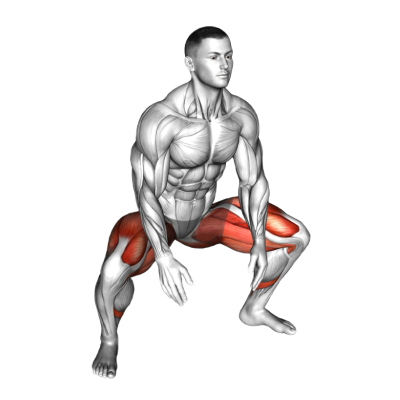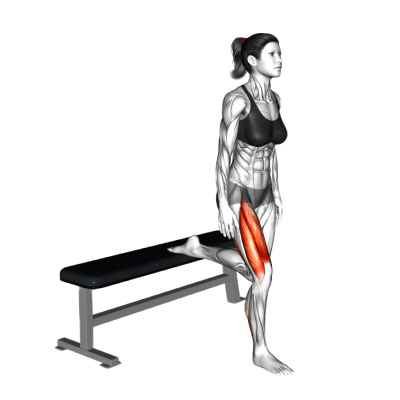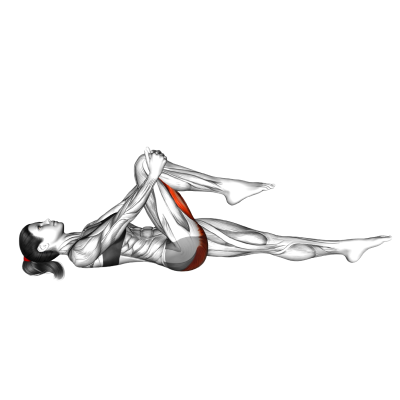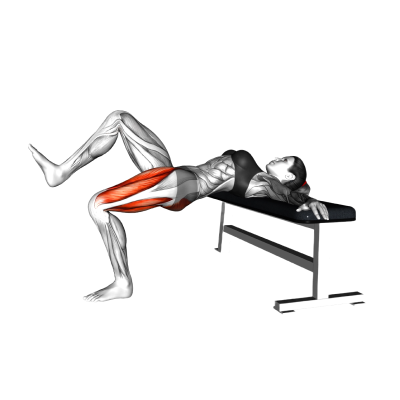Glute Foam Roll
Glute foam rolling means using a foam roller to target your gluteal muscles or glutes (the butt muscles), namely, your gluteus maximus, gluteus medius, and gluteus minimus. Foam rolling is a type of what’s called “self-myofascial release” (SMR). “Myo” means muscles and “fascia” or “fascial” refers to the soft tissues. Self-myofascial release or foam rolling is a self-massage method to reduce muscle tightness, break up adhesions or stiffness in your connective tissues, and release pain points in the body caused by “stuck” tissues. When you do a glute foam roll, you use a roller to put pressure on your glute muscles, simply rolling your body weight on top of your roller. This releases tension and brings blood flow to the area. Regularly using a foam roller on your glutes can improve your muscle dexterity and mobility.s’ dexterity and mobility. It's particularly beneficial to enhance your glutes' flexibility after an intense workout or prolonged sitting. Foam rolling can make you feel less stiff, help your muscles recover, and increase performance in your future glute and leg day workouts.
How-to Glute Foam Roll
- Sit on the floor and place a foam roller on your upper glute. Lean back using your hands for support.
- Slightly bend your knees and cross the leg being rolled over the other leg. Lift off from the ground, placing your body weight onto the glute muscle.
- Slowly push your body backward until the roller reaches the lower glutes.
- Slowly return to the starting position.
Muscle Worked
Primary Muscle Groups


Glutes
The glutes help you extend your thighs from the hips and drive you forward.Pro Tips for Foam Rolling Glutes
- Applying targeted pressure in specific areas is the most effective way to benefit from glute foam rolling. To do this, use your body weight to put pressure on any tender or knotty areas, and hold yourself in place for 20–30 seconds per trigger spot. Gently shift your body weight to try to lean into any “good pressure” that you feel. Chances are, that’s a spot that hasn’t had a deep release in a while.
- You should never feel shooting or acute pain, but foam rolling can definitely cause a lot of soreness.
Equipments
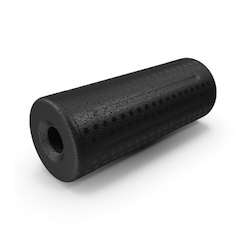
Foam Roller
Lie on the floor and place a foam roller below your traps and above your shoulder blades.Benefits of Glute Foam Roll
- A glute foam roll session not only sculpts and relieves pain in your derriere but also improves flexibility and range of motion in the surrounding hip area. Remember, your glute muscles play a significant role in the hip movement since everything down there is interconnected and powers movement like walking sitting, jumping, or standing.
- When you start to release muscle tightness around the glutes, chances are, your hips will feel it too! This can lead you to smoother overall lower body and posterior chain movement, plus better functionality in athletics or everyday tasks.
Alternatives
The following exercises target the same primary muscles using different equipment:
Warm Up & Cool Down
Warm Up
- Bodyweight Squats Squat down, pushing your hips back, and driving through your heels. Squats are some of the best compound glute exercises you can do to wake these muscles up. Try at least 10–15 bodyweight squats so your glutes are loose and warmed up before foam rolling. This prepares the glutes for deeper pressure. You can also use weighted squats as part of your regular leg day if you’d like.
- Lunges Step one foot forward into a lunge, then lower your back knee toward the floor, aiming to bend both knees to 90 degrees. Try alternating leg lunges for 10–12 reps per leg so both glutes engage equally and are ready for foam rolling.
- Plant your feet shoulder-width apart and draw large, slow circles with your hips, first in one direction and then the other. This helps loosen your glutes and hips so they feel limber before foam rolling. Do at least 10 circles in each direction to warm up your glutes.
Cool Down
- Pigeon Pose From all fours, bring one knee forward bending it behind your hands, and stick the other leg straight back, keeping your toes pointed down to the floor. Lower your chest toward the floor for a deeper stretch. The pigeon pose releases glutes and hip tension for better flexibility. It can also help you relax after you foam roll the glutes.
- Figure Four Lie on your back, cross one ankle over the other knee to make a 4 shape, then pull the bottom leg toward your chest to stretch your glutes and outer hip. Hold for 20–30 seconds each side.
- Seated Forward Fold Sit with your legs extended straight out and slowly hinge forward from your hips, reaching toward your toes. Keep your back flat as you lean forward to feel a stretch in your hamstrings and glutes. Bend your knees slightly if you can’t come all the way forward. Hold for 20–30 seconds to help release tightness from your hamstrings, which work in opposition to the glutes.
FAQ


Get fit with Flex
Build muscle & lose weight fast for free.
Available on iPhone + Apple Watch

